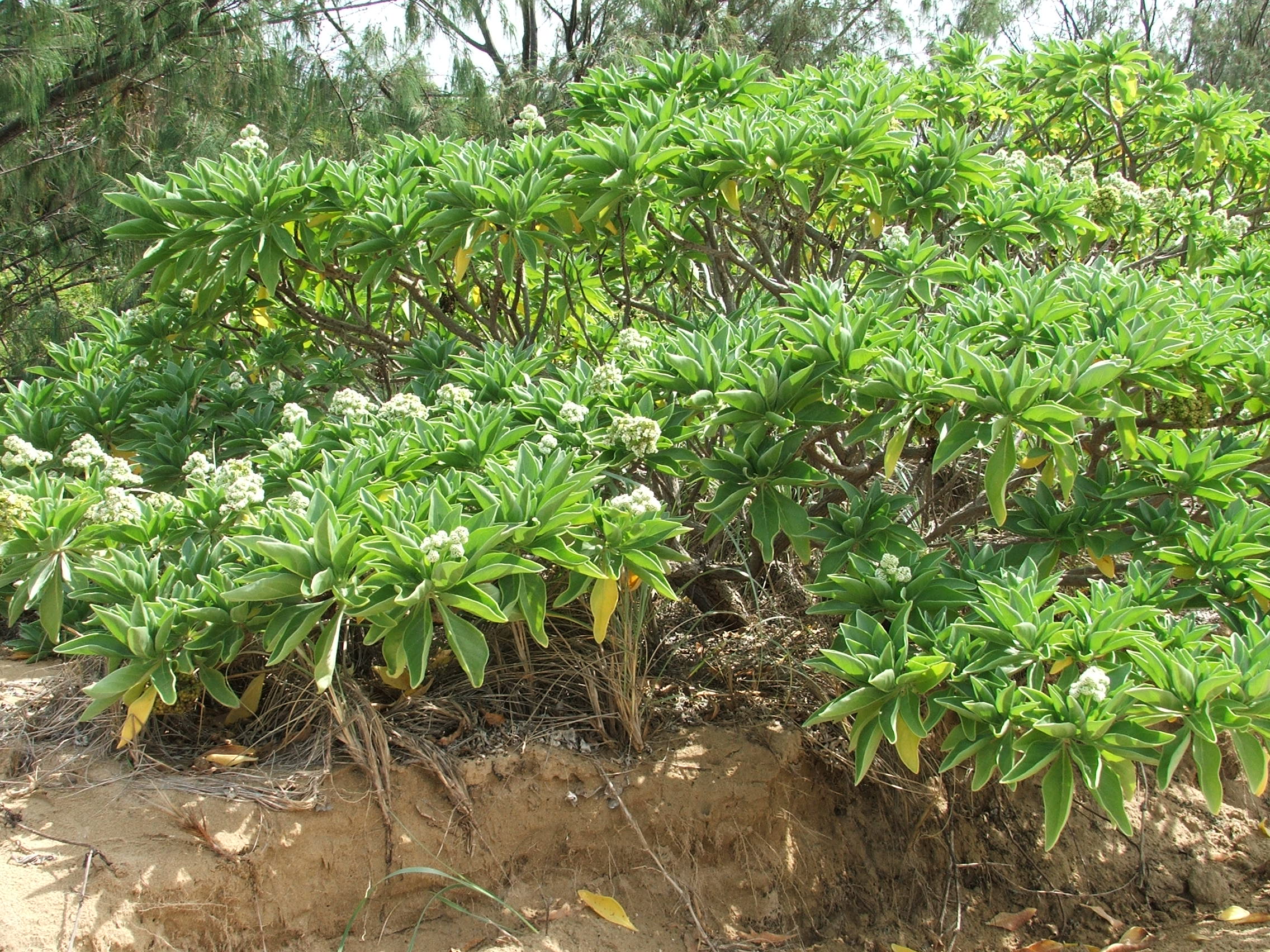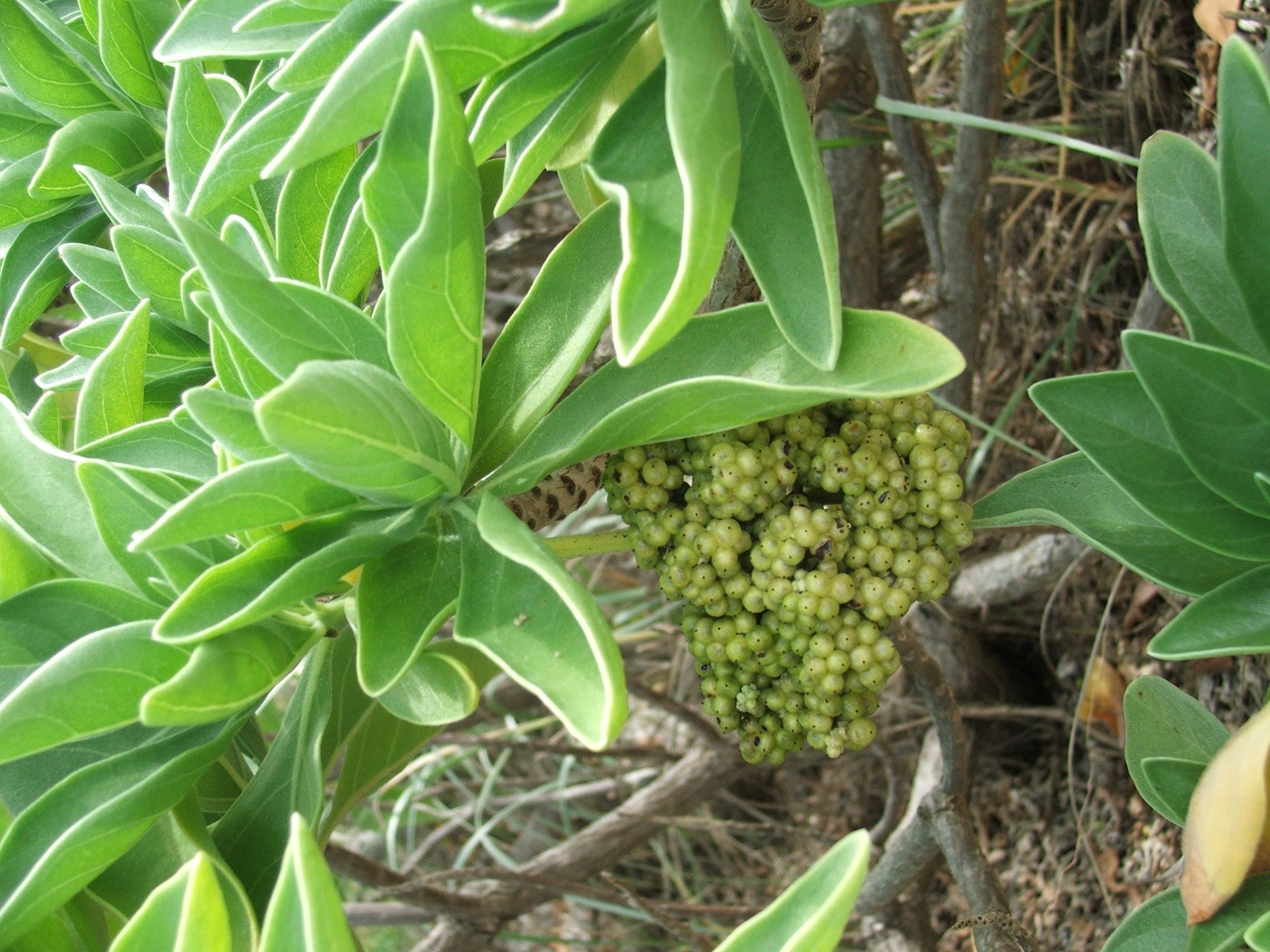Octopus bush
Argusia argentea, Fam. Boraginaceae








Shrub or small tree. The abundant flower buds and flowers gave rise to the genus. Argusia refers to the monster Argus, covered in eyes, in Greek mythology. When Argus was slain by Hermes, Hera transformed its eyes into the tail of the peacock, argentea is from the Latin 'argenteus' silvery, referring to the colour of the foliage. Previously Heliotropium foertherianum.
| Weed Category: | |
| Weed: | No |
| Form or habit: | Shrub, Small tree |
| Family: | Boraginaceae |
| Leaf: | Simple, entire, obovate, oblong or ovate, 4-20 x 2-8cm, both sides silky hairy and dull green. |
| Flower conspicuous: | Conspicuous |
| Flower colour: |
White |
| Flower description: | Terminal, up to 18cm across, dichotomously branched, bearing small white flowers in cymes, male and female flowers on separate plants. August to February. |
| Fruit conspicuous: | Conspicuous |
| Fruit colour: |
Brown, Green, Yellow |
| Fruit: | |
| Fruit description: | Green to yellow turning brown, globose fruit, 5-8mm in diameter. When mature they are dry and break into two halves. August to February. |
| Habitat: | Coastal strand. |
| Distribution | Queensland, Northern Territory, New Guinea, Melanesia, Malesia, Asia, Pacific Islands. |
| Food source for: | Fruit eaten by the rose crowned fruit dove and silvereye. Larval food plant of the heliotrope moth Utetheisa pulchelloids and Utetheisa pectinata (a tiger moth). |
| Toxicity: | No toxicity known |
| Origin: | Australia, New Guinea, Melanesia, Malesia, Asia, Pacific Islands. |
| Notes: | Young leaves can be eaten raw or cooked. The leaves are used for medicinal purposes by Pacific Islanders including to relieve itching and to treat stomach problems and a disease caused by eating toxic fish, juice from the leaves is used to reduce fever. Dried leaves have sometimes been used as 'tobacco'. The leaves used to be used to make a red dye in Tahiti. The wood is occasionally used by Pacific Islanders to make items such as tool handles, gongs and carvings. |
| Information sources: | Melzer R. & Plumb J. (2007) Plants of Capricornia. |